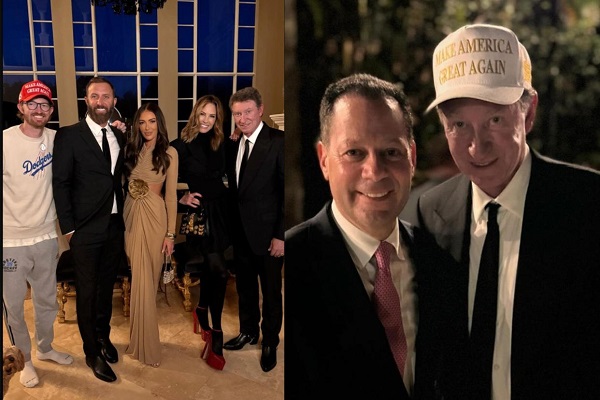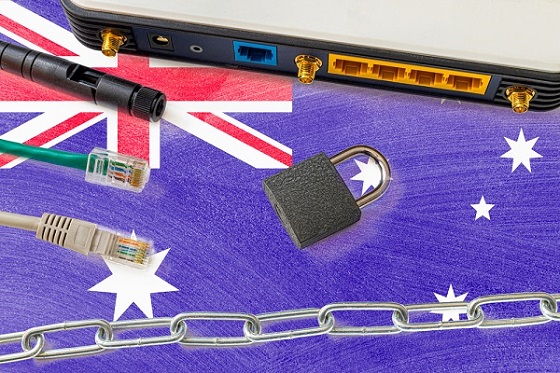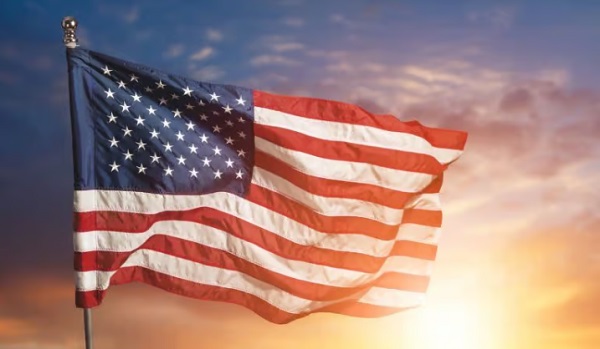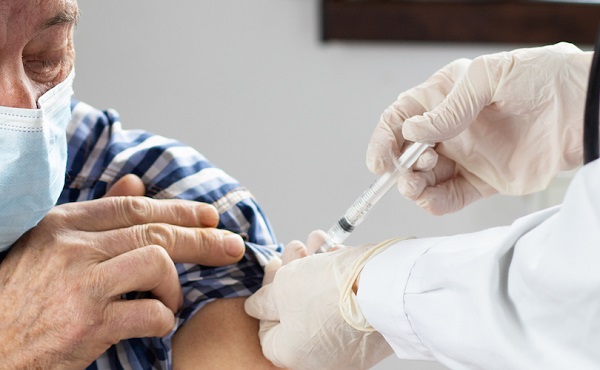International
‘Fingers Being Pointed’: Secret Service’s Explanations For Security Failures Ahead Of Trump Assassination Attempt Aren’t Adding Up
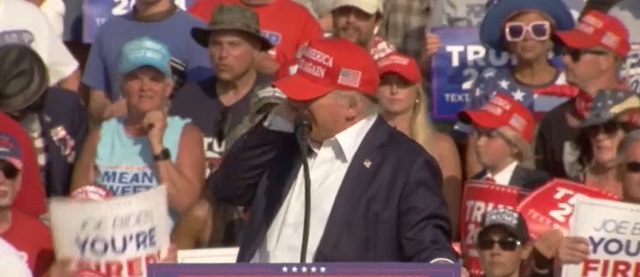
 From the Daily Caller News Foundation
From the Daily Caller News Foundation
Secret Service’s explanations for the security failures surrounding the assassination attempt against former President Donald Trump at a rally on Saturday aren’t adding up, according to security experts and former Secret Service agents.
Emerging details highlight what seems to be a disconnect between local officials and Secret Service, while making it more apparent that there were major oversights. Many key questions hinge on the responsibilities delegated to local police, who U.S. Secret Service Director Kimberly Cheatle confirmed during a Monday interview with ABC News were inside the building the shooter fired from, though nobody was stationed on the rooftop.
Cheatle explained a decision was made not to put anybody on top of the building because the “sloped” roof made it unsafe, but security experts and former Secret Service agents who spoke with the Daily Caller News Foundation emphasized not having someone on the roof was a “big failure” and didn’t believe Cheatle’s explanation was sufficient.
“Let’s just say the local law enforcement officers [and] the Secret Service agree that it’s just not safe to keep someone up there for a couple of hours,” former Secret Service agent Anthony Cangelosi told the DCNF. “Then the question is, well, how do we maintain its integrity otherwise? It’s not like you just throw your hands up and say ‘can’t do that.’”
Cangelosi said there is no “justifiable reason” for failing to cover the roof, suggesting they should have found solutions like putting another platform up or getting an officer on a lift.
Peter Yachmetz, retired FBI agent and principal security consultant at Yachmetz Consulting Group, pointed out that the shooter was moving around on the “unsafe” roof prior to the incident.
“The slope didn’t affect him,” Yachmetz told the DCNF.
JUST IN: USSS director Kim Cheatle says sn*pers weren't on the roof where Thomas Crooks shot from because it was "sloped" and unsafe.
Ironically, the sn*pers who were behind Trump during the rally were on a sloped roof.
"That building in particular has a sloped roof at its… pic.twitter.com/Vg36tXr9rJ
— Collin Rugg (@CollinRugg) July 16, 2024
Law enforcement reportedly spotted the shooter on the roof 30 minutes before shots were fired, WPXI reported Monday. After the incident, a witness described watching a man climbing onto the roof and trying to warn a police officer, claiming officials responded with confusion.
“The reality is, regardless of the spin, that particular roof should have been under constant surveillance and or posted,” former secret service agent Tim Miller told the DCNF.
Here's video of the 20-year-old gunman, on the roof in a prone position, opening fire at the Donald Trump rally in Butler, PA.
Shots ring out and panic ensues before the shooter is himself shot and killed seconds later.
Video acquired by TMZ.
More: https://t.co/72O4XtmVwA pic.twitter.com/t6M8a09fbK— michael j. babcock (@mikejbabcock) July 14, 2024
“In this particular instance, we did share support for that particular site and that the Secret Service was responsible for the inner perimeter,” Cheatle told ABC News Monday during an interview. “And then we sought assistance from our local counterparts for the outer perimeter. There was local police in that building — there was local police in the area that were responsible for the outer perimeter of the building.”
However, a local law enforcement official told The New York Times Tuesday that the local forces were in an adjacent building, not the one the shooter was firing from.
The discrepancies in their accounts only add to the uncertainties surrounding who was responsible.
CBS News reported Monday that there were three snipers stationed inside the building shooter Thomas Matthew Crooks fired from, citing a local law enforcement officer. One of the snipers saw Crooks looking through a rangefinder in the minutes before he fired and radioed command post, according to CBS News.
The Butler Township Police Department declined to confirm the report to the DCNF, stating that there is an ongoing investigation by the FBI.
Butler County Sheriff Michael Slupe declined to offer additional comments Tuesday, telling the DCNF he is “backing away from media requests for comment and opinions.”
“There are too many questions being posed that I do not have first hand knowledge of and too many fingers being pointed,” he said. “I am in charge of the Deputy Sheriffs and no other law enforcement agency. My Deputies performed their duties at their assigned areas and went above and beyond after the shooting started and ended in the their actions to help people and assist police in clearing the nearby buildings.”
Slupe previously confirmed to CNN that an armed Butler Township officer encountered Crooks before he shot at Trump, but retreated down the ladder after Crooks pointed his gun at him. He told KDKA-TV there was a security failure, but noted “there is not just one entity responsible.”
“The Secret Service plays a key role in protecting, in this case, former President Trump, but they don’t act alone,” he told the outlet. “The Secret Service receives support from local police departments.”
#NEW: CBS News just learned the image circulating online of the U.S. Secret Service counter sniper team is not the team that neutralized the gunman, per Secret Service spokesman. The sniper that killed Crooks with 1 shot was in yellow area on below diagram. @CBSNews @KDKA pic.twitter.com/XE1QEShR7P
— MEGHAN SCHILLER (@MeghanKDKA) July 16, 2024
Pennsylvania State Police, however, did confirm they had no members “inside the building or staging in it.”
“The Pennsylvania State Police provided all resources that the United States Secret Service (USSS) requested for former President Trump’s rally in Butler on Saturday, July 13th, including approximately 30 to 40 troopers to assist with securing the inside perimeter,” Pennsylvania State Police Lieutenant Adam Reed told the DCNF. “Among PSP’s duties at the rally, the Department was not responsible for securing the building or property at AGR International.”
Reed said he could not say when an officer witnessed the shooter, as it was not a state trooper who saw him.
WATCH: Trump raises fist to crowd after shots were fired at his rally in PA.
— Daily Caller (@DailyCaller) July 13, 2024
Former secret service agent Jeffrey James explained to the DCNF that protection “works in a series of concentric circles.” Typically, there is an inner circle of secret service agents, a second circle that mixes both agents and local law enforcement, and an outer ring that is largely state and local partners.
If the agent in charge of the site told a local law enforcement officer on the outer perimeter that the building is his responsibility, then anything that happens is on the officer.
“But if that agent didn’t find one of the local law enforcement partners and give very clear, direct directions…then it’s going to be the responsibility or the fault of that agent for not delegating that,” he told the DCNF.
It’s unclear what instructions the Secret Service gave to local law enforcement.
Butler County District Attorney Richard Goldinger told The Washington Post Tuesday that “Secret Service was in charge” and that “it was their responsibility to make sure that the venue and the surrounding area was secure.”
“For them to blame local law enforcement is them passing the blame when they hold the blame, in my opinion,” Goldinger told The Washington Post.
However, the Secret Service released a statement on Tuesday pushing back against assertions that they were blaming local law enforcement for the tragedy that unfolded on Saturday. “Any news suggesting the Secret Service is blaming local law enforcement for Saturday’s incident is simply not true,” the statement posted to the Secret Service’s X page said.
“I am having difficulty reconciling the answer the Director gave in her ABC interview with the official statement made on social media,” Patrick Yoes, national president of the Fraternal Order of Police, said in a press release on Tuesday. “Our goal is to provide whatever assistance the Secret Service needs to perform their mission and to do so with mutual respect, trust, and accuracy.”
A RealClearPolitics report suggested Sunday that resources were diverted away from Trump’s rally to an event where First Lady Jill Biden was speaking. Anthony Guglielmi, chief of communications for the United States Secret Service, denied this was the case.
Questions also remain about why Crooks was not taken out sooner. Cangelosi explained to the DCNF that counter-snipers can face challenges due to their distance from the target.
“With counter snipers, you’re usually so far away, it’s not usually clear whether an individual is an imminent threat, ” Cangelosi said. “It’s harder to discern. Once they discern whether that person is a threat to life or serious bodily injury, they can take the shot.”
Yachmetz questioned why drone coverage was not utilized.
“A drone strategically placed a few thousand feet above could have oversaw the entire venue,” he said.
“In my opinion, a detailed, in-depth very specific investigation must be conducted of all procedures [and] this entire matter by a non-biased outside investigative group (possibly of retired agents),” Yachmetz told the DCNF, emphasizing the investigation must not be “politically motivated.”
House Committee on Oversight and Accountability Chairman James Comer announced Monday that Cheatle would testify at a committee hearing on July 22. President Joe Biden said Sunday that he directed an “independent review” of the events.
The FBI told the DCNF it has “nothing additional to provide at this time beyond previously-issued statements.” The Bureau said Monday that it gained access to Crooks’ phone and “has conducted nearly 100 interviews of law enforcement personnel, event attendees, and other witnesses.”
Trump suffered a wound to his ear, and two were killed, including Crooks and 50-year-old ex-volunteer fire chief, Corey Comperatore. Two other attendees were also wounded the attack.
Secret Service did not respond to a request for comment.
Wallace White and Owen Klinsky contributed to this report.
Featured image credit: (Screen Capture/CSPAN)
International
Elon Musk, Vivek Ramaswamy Outline Sweeping Plan to Cut Federal Regulations And Staffing
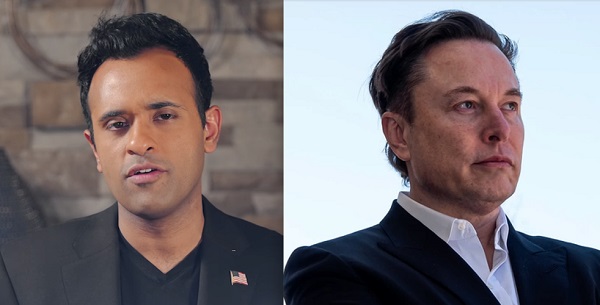
 From the Daily Caller News Foundation
From the Daily Caller News Foundation
Elon Musk and Vivek Ramaswamy published an op-ed Wednesday in the Wall Street Journal that revealed their huge plans for the Department of Government Efficiency (DOGE).
Civil service protections won’t shield federal workers from mass layoffs, according to the op-ed. Musk and Ramaswamy outlined a sweeping plan to cut federal regulations and staffing, marking the most detailed glimpse yet into Trump’s downsizing strategy.
The pair, acting as “outside volunteers,” pledged to collaborate with Trump’s transition team to assemble a “lean team of small-government crusaders.” This team, they said, would work closely with the White House Office of Management and Budget to implement their vision.
The initiative focuses on three core objectives: cutting regulations, reducing administrative overhead, and achieving cost savings. Legal experts and advanced technology will help identify regulations that overstep congressional authority. These rules would be presented to Trump, who could halt enforcement and begin the repeal process through executive action.
BREAKING: Donald Trump has officially announced Elon Musk & Vivek Ramaswamy will lead Department of Government Efficiency (DOGE) pic.twitter.com/9WNn5FojN1
— Daily Caller (@DailyCaller) November 13, 2024
“A drastic reduction in federal regulations provides sound industrial logic for mass head-count reductions across the federal bureaucracy. DOGE intends to work with embedded appointees in agencies to identify the minimum number of employees required at an agency for it to perform its constitutionally permissible and statutorily mandated functions,” the op-ed revealed.
Musk and Ramaswamy acknowledged the impact of their plan and said displaced workers should be treated with dignity, proposing incentives like early retirement packages and severance pay to ease their transition into private-sector roles. Despite common assumptions, civil service protections won’t prevent these layoffs, they contended, as long as the terminations are framed as reductions in force rather than targeting specific employees.
Musk and Ramaswamy also advocated for relocating federal agencies out of Washington, D.C., and encouraging voluntary resignations from remote workers unwilling to return to the office full-time. “If federal employees don’t want to show up, American taxpayers shouldn’t pay them for the Covid-era privilege of staying home,” they said.
Ramaswamy said Tuesday that federal employees must return to the office full-time. He noted on X, previously known as Twitter, that unions are hastily revising agreements to prevent job losses, claiming the prospect of a five-day office schedule has left some “in tears.”
Trump announced that Musk and Ramaswamy will co-lead a newly created DOGE during his second term. The duo will work with the White House Office of Management and Budget to streamline federal agencies, reduce wasteful spending, and eliminate excessive regulations.
Energy
What does a Trump presidency means for Canadian energy?
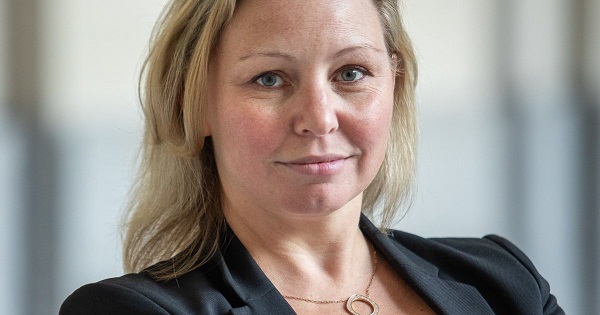
From Resource Works
Heather-Exner Pirot of the Business Council of Canada and the Macdonald-Laurier Institute spoke with Resource Works about the transition to Donald Trump’s energy policy, hopes for Keystone XL’s revival, EVs, and more.
Do you think it is accurate to say that Trump’s energy policy will be the complete opposite of Joe Biden’s? Or will it be more nuanced than that?
It’s more nuanced than that. US oil and gas production did grow under Biden, as it did under Obama. It’s actually at record levels right now. The US is producing the most oil and gas per day that any nation has ever produced in the history of the world.
That said, the federal government in the US has imposed relatively little control over production. In the absence of restrictive emissions and climate policies that we have in Canada, most of the oil production decisions have been made based on market forces. With prices where they’re at currently, there’s not a lot of shareholder appetite to grow that significantly.
The few areas you can expect change: leasing more federal lands and off shore areas for oil and gas development; rescinding the pause in LNG export permits; eliminating the new methane fee; and removing Biden’s ambitious vehicle fuel efficiency standards, which would subsequently maintain gas demand.
I would say on nuclear energy, there won’t be a reversal, as that file has earned bipartisan support. If anything, a Trump Admin would push regulators to approve SMRs models and projects faster. They want more of all kinds of energy.
Is Keystone XL a dead letter, or is there enough planning and infrastructure still in-place to restart that project?
I haven’t heard any appetite in the private sector to restart that in the short term. I know Alberta is pushing it. I do think it makes sense for North American energy security – energy dominance, as the Trump Admin calls – and I believe there is a market for more Canadian oil in the USA; it makes economic sense. But it’s still looked at as too politically risky for investors.
To have it move forward I think you would need some government support to derisk it. A TMX model, even. And clear evidence of social license and bipartisan support so it can survive the next election on both sides of the border.
Frankly, Northern Gateway is the better project for Canada to restart, under a Conservative government.
Keystone XL was cancelled by Biden prior to the invasion of Ukraine in 2022. Do you think that the reshoring/friendshoring of the energy supply is a far bigger priority now?
It absolutely is a bigger priority. But it’s also a smaller threat. You need to appreciate that North America has become much more energy independent and secure than it has ever been. Both US and Canada are producing at record levels. Combined, we now produce more than the Middle East (41 million boe/d vs 38 million boe/d). And Canada has taken a growing share of US imports (now 60%) even as their import levels have declined.
But there are two risks on the horizon: the first is that oil is a non renewable resource and the US is expected to reach a peak in shale oil production in the next few years. No one wants to go back to the days when OPEC + had dominant market power. I think there will be a lot of demand for Canadian oil to fill the gap left by any decline in US oil production. And Norway’s production is expected to peak imminently as well.
The second is the need from our allies for LNG. Europe is still dependent on Russia for natural gas, energy demand is growing in Asia, and high industrial energy costs are weighing on both. More and cheaper LNG from North America is highly important for the energy security of our allies, and thus the western alliance as it faces a challenge from Russia, China and Iran.
Canada has little choice but to follow the US lead on many issues such as EVs and tariffs on China. Regarding energy policy, does Canada’s relative strength in the oil and gas sector give it a stronger hand when it comes to having an independent energy policy?
I don’t think we want an independent energy policy. I would argue we both benefit from alignment and interdependence. And we’ve built up that interdependence on the infrastructure side over decades: pipelines, refineries, transmission, everything.
That interdependence gives us a stronger hand in other areas of the economy. Any tariffs on Canadian energy would absolutely not be in American’s interests in terms of their energy dominance agenda. Trump wants to drop energy costs, not hike them.
I think we can leverage tariff exemptions in energy to other sectors, such as manufacturing, which is more vulnerable. But you have to make the case for why that makes sense for US, not just Canada. And that’s because we need as much industrial capacity in the west as we can muster to counter China and Russia. America First is fine, but this is not the time for America Alone.
Do you see provinces like Alberta and Saskatchewan being more on-side with the US than the federal government when it comes to energy?
Of course. The North American capital that is threatening their economic interests is not Washington DC; it’s Ottawa.
I think you are seeing some recognition – much belated and fast on the heels of an emissions cap that could shut in over 2 million boe of production! – that what makes Canada important to the United States and in the world is our oil and gas and uranium and critical minerals and agricultural products.
We’ve spent almost a decade constraining those sectors. There is no doubt a Trump Admin will be complicated, but at the very least it’s clarified how important those sectors are to our soft and hard power.
It’s not too late for Canada to flex its muscles on the world stage and use its resources to advance our national interests, and our allies’ interests. In fact, it’s absolutely critical that we do so.
-

 Brownstone Institute1 day ago
Brownstone Institute1 day agoThe Most Devastating Report So Far
-

 Business1 day ago
Business1 day agoCarbon tax bureaucracy costs taxpayers $800 million
-

 ESG1 day ago
ESG1 day agoCan’t afford Rent? Groceries for your kids? Trudeau says suck it up and pay the tax!
-

 Daily Caller1 day ago
Daily Caller1 day agoLos Angeles Passes ‘Sanctuary City’ Ordinance In Wake Of Trump’s Deportation Plan
-

 John Stossel1 day ago
John Stossel1 day agoGreen Energy Needs Minerals, Yet America Blocks New Mines
-
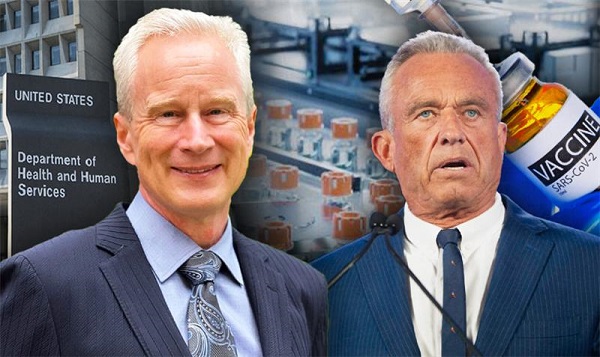
 COVID-192 days ago
COVID-192 days agoDr. McCullough praises RFK Jr., urges him to pull COVID shots from the market
-

 Alberta1 day ago
Alberta1 day agoProvince considering new Red Deer River reservoir east of Red Deer
-

 MAiD2 days ago
MAiD2 days agoOver 40% of people euthanized in Ontario lived in poorest parts of the province: government data


